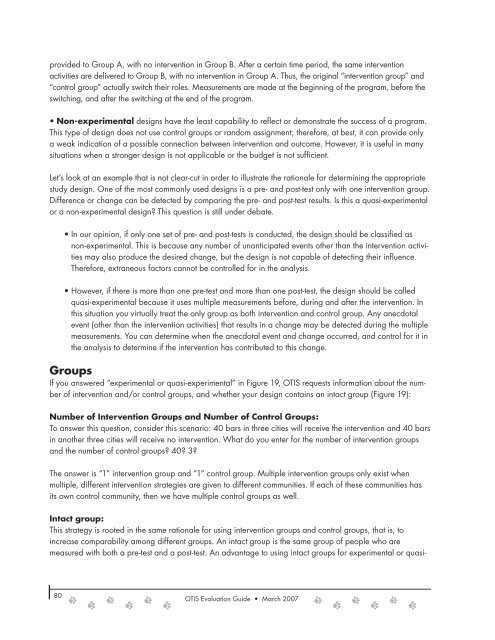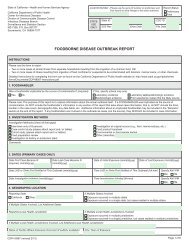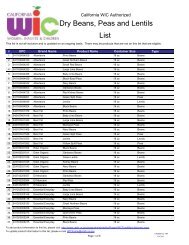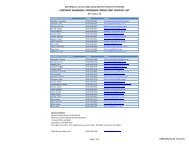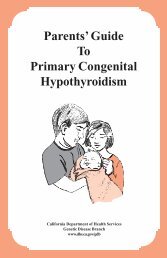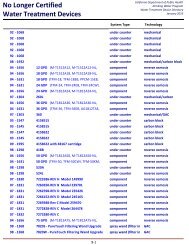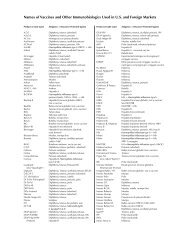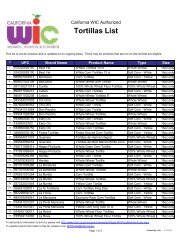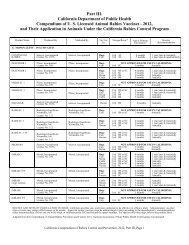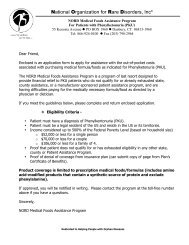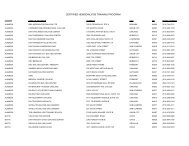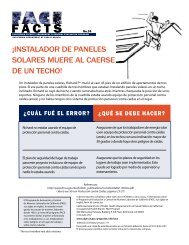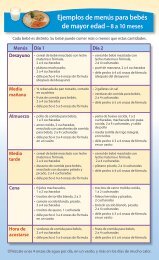OTIS Evaluation Guide (PDF) - California Department of Public Health
OTIS Evaluation Guide (PDF) - California Department of Public Health
OTIS Evaluation Guide (PDF) - California Department of Public Health
You also want an ePaper? Increase the reach of your titles
YUMPU automatically turns print PDFs into web optimized ePapers that Google loves.
provided to Group A, with no intervention in Group B. After a certain time period, the same intervention<br />
activities are delivered to Group B, with no intervention in Group A. Thus, the original “intervention group” and<br />
“control group” actually switch their roles. Measurements are made at the beginning <strong>of</strong> the program, before the<br />
switching, and after the switching at the end <strong>of</strong> the program.<br />
• Non-experimental designs have the least capability to reflect or demonstrate the success <strong>of</strong> a program.<br />
This type <strong>of</strong> design does not use control groups or random assignment; therefore, at best, it can provide only<br />
a weak indication <strong>of</strong> a possible connection between intervention and outcome. However, it is useful in many<br />
situations when a stronger design is not applicable or the budget is not sufficient.<br />
Let’s look at an example that is not clear-cut in order to illustrate the rationale for determining the appropriate<br />
study design. One <strong>of</strong> the most commonly used designs is a pre- and post-test only with one intervention group.<br />
Difference or change can be detected by comparing the pre- and post-test results. Is this a quasi-experimental<br />
or a non-experimental design? This question is still under debate.<br />
80<br />
• In our opinion, if only one set <strong>of</strong> pre- and post-tests is conducted, the design should be classified as<br />
non-experimental. This is because any number <strong>of</strong> unanticipated events other than the intervention activities<br />
may also produce the desired change, but the design is not capable <strong>of</strong> detecting their influence.<br />
Therefore, extraneous factors cannot be controlled for in the analysis.<br />
• However, if there is more than one pre-test and more than one post-test, the design should be called<br />
quasi-experimental because it uses multiple measurements before, during and after the intervention. In<br />
this situation you virtually treat the only group as both intervention and control group. Any anecdotal<br />
event (other than the intervention activities) that results in a change may be detected during the multiple<br />
measurements. You can determine when the anecdotal event and change occurred, and control for it in<br />
the analysis to determine if the intervention has contributed to this change.<br />
Groups<br />
If you answered “experimental or quasi-experimental” in Figure 19, <strong>OTIS</strong> requests information about the number<br />
<strong>of</strong> intervention and/or control groups, and whether your design contains an intact group (Figure 19):<br />
Number <strong>of</strong> Intervention Groups and Number <strong>of</strong> Control Groups:<br />
To answer this question, consider this scenario: 40 bars in three cities will receive the intervention and 40 bars<br />
in another three cities will receive no intervention. What do you enter for the number <strong>of</strong> intervention groups<br />
and the number <strong>of</strong> control groups? 40? 3?<br />
The answer is “1” intervention group and “1” control group. Multiple intervention groups only exist when<br />
multiple, different intervention strategies are given to different communities. If each <strong>of</strong> these communities has<br />
its own control community, then we have multiple control groups as well.<br />
Intact group:<br />
This strategy is rooted in the same rationale for using intervention groups and control groups, that is, to<br />
increase comparability among different groups. An intact group is the same group <strong>of</strong> people who are<br />
measured with both a pre-test and a post-test. An advantage to using intact groups for experimental or quasi-<br />
<strong>OTIS</strong> <strong>Evaluation</strong> <strong>Guide</strong> • March 2007


